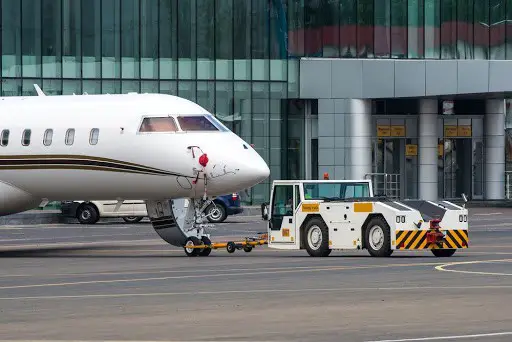
Aircraft Ground Handling Checklist
Aircraft ground handling is a crucial aspect of the aviation industry that encompasses various activities performed on an aircraft while on the ground. These activities include servicing, maintenance, cleaning, loading, and unloading of passengers and cargo, and other operations that ensure the safety and comfort of the passengers and crew.
A ground handling checklist is a document that lists the steps and procedures that need to be followed by the ground crew to ensure the safety and efficiency of the operation. In this article, we will discuss the importance of an aircraft ground handling checklist and the items and steps that must be included in it.
Why is a ground handling checklist necessary?
Ground handling operations involve complex and intricate procedures that require the involvement of multiple personnel and equipment. An aircraft ground handling checklist ensures that all the procedures are carried out systematically, effectively, and safely, focusing on preventing errors and reducing the risk of accidents.
A well-documented ground-handling checklist can help ground-handling personnel to maintain consistency and accuracy in their work, ensuring that all the essential procedures are carried out in a timely and effective manner.
Overall, the purpose of a ground handling checklist is to:
- Provide a standard and consistent way of performing ground-handling tasks
- Reduce human errors and prevent accidents or incidents
- Comply with regulatory requirements and best practices
- Enhance communication and coordination among the ground crew and other stakeholders
- Improve customer satisfaction and operational performance
What are the essential items in an aircraft ground handling checklist?
The essential steps and items in an aircraft ground handling checklist are as follows:
Pre-flight inspection
Before the aircraft takes off, a pre-flight inspection is necessary to ensure that the aircraft is airworthy and safe to fly. The pre-flight inspection includes a comprehensive check of the aircraft’s mechanical systems, fuel, oil, and other critical components. The ground handling personnel must perform a pre-flight inspection of the aircraft to ensure that it is ready for takeoff.
Loading and unloading of cargo
The loading and unloading of cargo is a crucial aspect of aircraft ground handling. The ground handling personnel must ensure that the cargo is loaded and unloaded safely and that the weight and balance of the aircraft are maintained within the permissible limits.
The checklist must include items such as cargo weight, distribution, and securing procedures.
Passenger handling
Passenger handling is a critical aspect of ground handling operations, and it includes the check-in, boarding, and disembarkation of passengers. The ground handling personnel must ensure that the passengers are safely boarded and deplaned and their luggage is handled with care.
The checklist must include items such as passenger and baggage screening procedures, boarding and deplaning procedures, and handling of special needs passengers.
Aircraft refueling
Aircraft refueling is a crucial aspect of ground handling operations, and it must be carried out safely and efficiently. The ground handling personnel must ensure that the aircraft is refueled as per the prescribed procedures, and all the necessary precautions are taken to prevent fuel contamination or spillage.
The checklist must include items such as fueling procedures, fuel quality checks, and spillage prevention procedures.
Pushback and towing
Pushback and towing are essential operations in aircraft ground handling, and they require the use of specialized equipment and trained personnel. The ground handling personnel must ensure that the aircraft is safely pushed back from the gate and towed to the runway.
The checklist must include items such as pushback and towing procedures, equipment checks, and communication procedures.
Variations in ground handling checklist
A ground handling checklist may vary depending on factors such as:
- The type and size of aircraft
- The type and level of service required by the airline
- The layout and facilities of the airport or terminal
- The weather conditions or seasonality
- The local regulations or standards
Therefore, the ground crew must follow their specific checklist for each operation. They should also update their checklist regularly based on feedback, experience, changes in procedures or equipment, etc.
A well-designed and well-implemented ground handling checklist can help improve safety, quality, efficiency, productivity, and customer satisfaction in aircraft operations.
Conclusion
In conclusion, a comprehensive ground-handling checklist is essential to ensure the safety, efficiency, and effectiveness of ground-handling operations. The checklist must include all the essential procedures and precautions that must be taken to maintain the safety and comfort of the passengers and crew.
The ground handling personnel must be trained and familiar with the checklist, and they must follow it diligently to ensure that all the procedures are carried out systematically, effectively, and safely.





